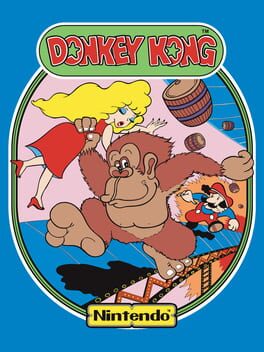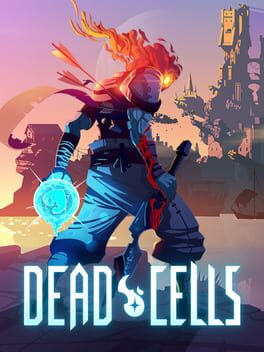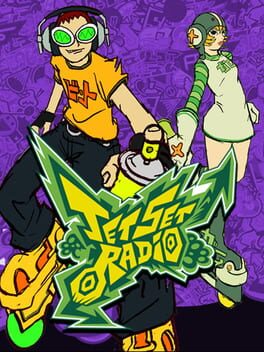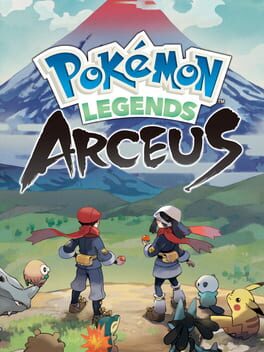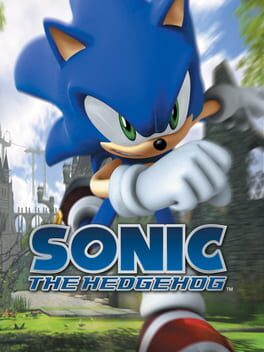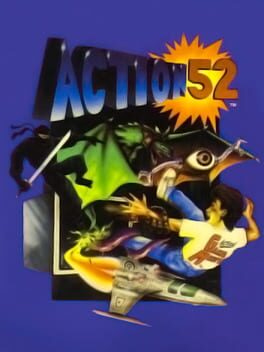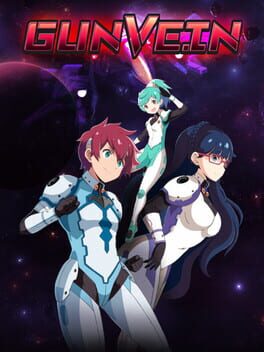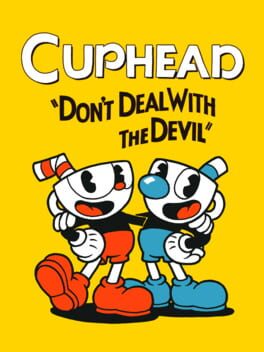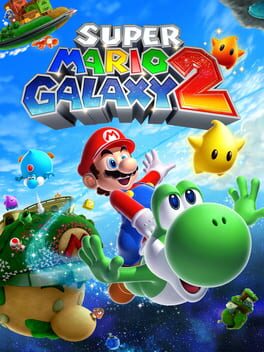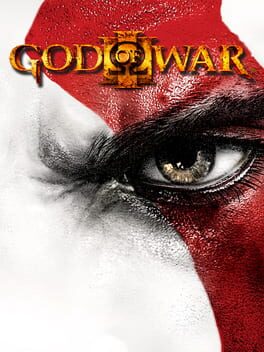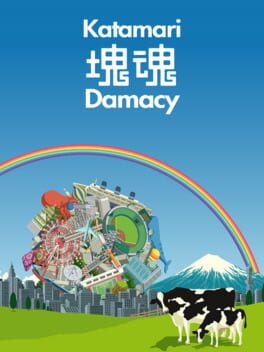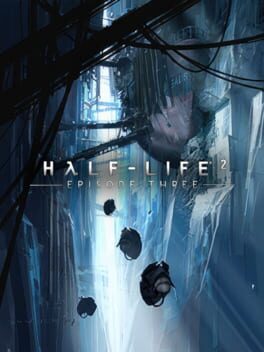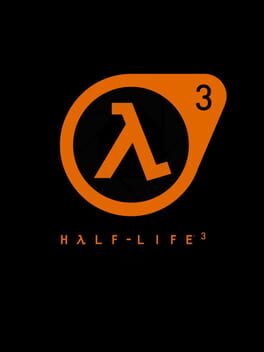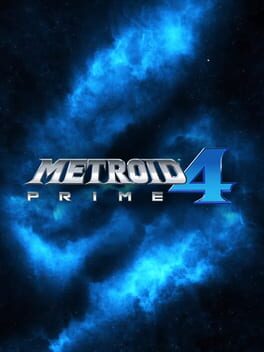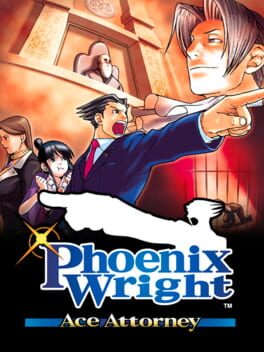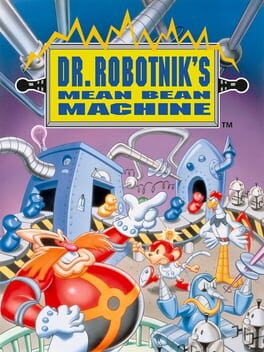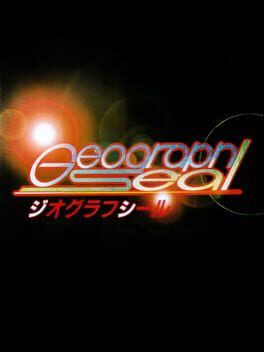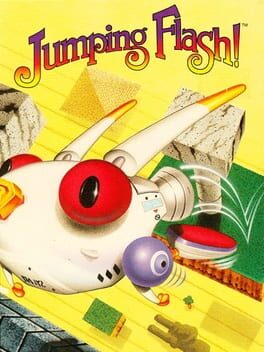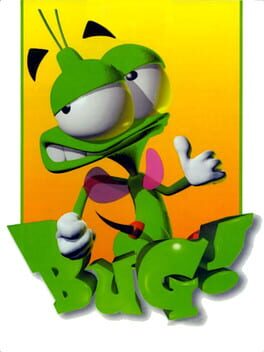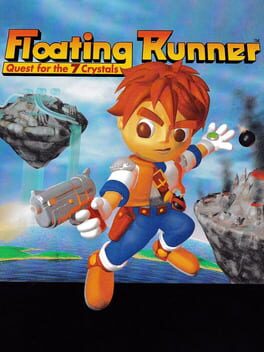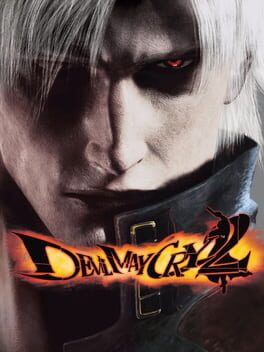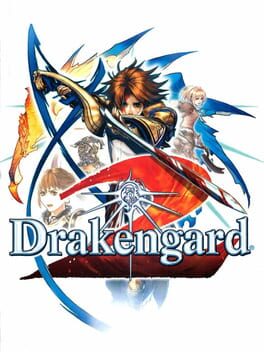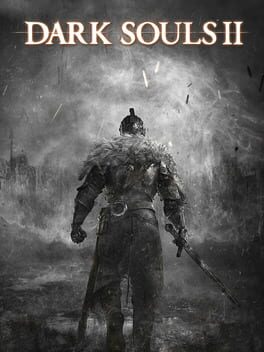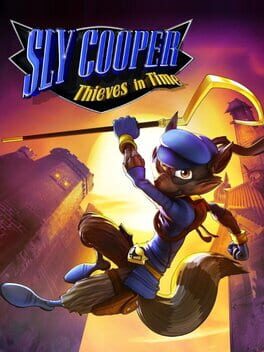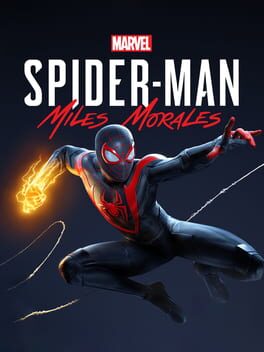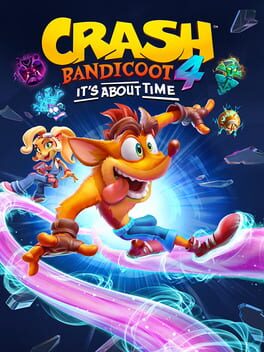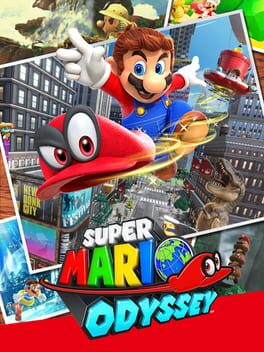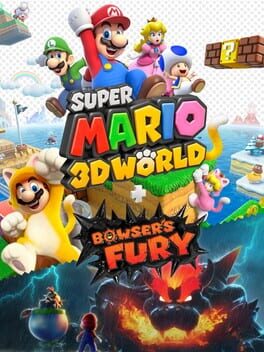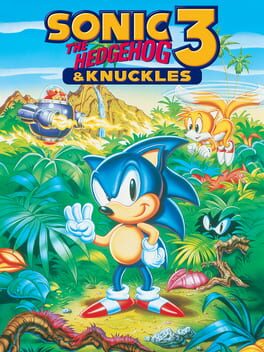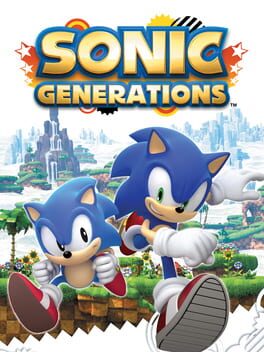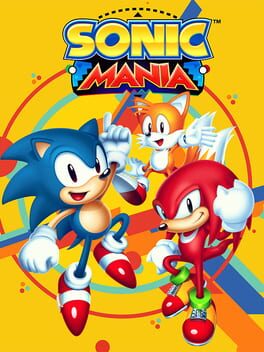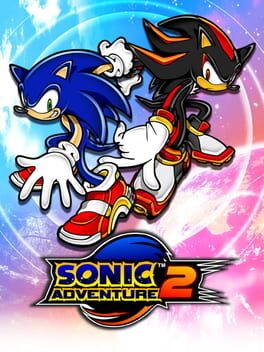MrLog
644 reviews liked by MrLog
Donkey Kong
1981
Dead Cells
2017
Dead Cells
2017
Jet Set Radio
2012
Thanks again to Pangburn for convincing me to give this another chance and thoroughly looking over my resulting thoughts.
Here’s a fun little drinking game: open up a video of Jet Set Radio’s tutorial, and take a sip for every comment complaining or memeing about the difficulty. As silly as this sounds, there appears to be some veneer of truth to Jet Set Radio’s reputation as a game where you need a “tutorial for the tutorial,” considering that more people have beaten the full story mode on Steam than have actually cleared the tutorial. As a result, the tutorial has become a microcosm of Jet Set Radio’s critical reputation nowadays when judging its gameplay: take a scan around popular circles, and you’ll find that some of the most frequently used descriptors include “jank,” “frustrating,” and “outdated.” I, on the other hand, would like to reintroduce a different descriptor to the conversation: “misunderstood.”
Back in 2017, I was similarly convinced that the game suffered from flimsy controls and level design, but the more I tinkered with it in the last three weeks, the more I came to realize its consistency regarding its mechanical intersections. Jet Set Radio eschews complex input potential in exchange for simple inputs (skating with the left joystick, jumping, and boosting) and context-sensitive movement using rails and walls for grinding. This works in its favor because the game never plants the player into situations of fuzzy context: all grindable walls and rails behave the exact same way throughout the game and are carefully spaced apart in each sub-area to allow players to naturally jump between setpieces as long as they maintain momentum. Additionally, Jet Set Radio has fairly little RNG, and what little there is can usually be mitigated. Enemy patterns and waves (the latter of which can be directly controlled via keeping an eye on the number of sprayed graffitis) play out exactly the same every time, allowing for players to minimize enemy impact. Similarly, stages have practically no moving physical setpieces outside of easily avoidable cars and trains; they are set to a consistent timer, and even if players are unaware of the exact timing, they give enough advance warning via honks upon approaching so players can jump out of the way. Again, some enemies are tougher to pin down, such as the jetpack enemies in “Fight or Flight” with their aerial pathing/tracking or the burly bodyguard enemies sometimes despawning and respawning upon aggroing them, but these are rare exceptions when considering the game’s enemy roster as a whole.
As a result of this general mechanical consistency, the game’s robust level design allows for a great degree of freedom regarding level approaches. This is where the adjacent topic of character selection becomes particularly relevant. Pangburn has brought up that this system acts as a pseudo-difficulty slider, though I would like to expand upon his point regarding graffiti. Characters with less graffiti skills will not gain as many points via completing graffiti QTE chains, but come with the advantage of requiring less sprays. This can be further exploited due to QTE consistency: spray inputs are graffiti-skill dependent and will remain the same for every graffiti in the game. As a result, players can repeat the cycle of spraying the first single input and immediately disengaging the QTE with LT. By doing so, they can “reset” the graffiti QTE and tap LT again to reenter the QTE sequence and bring up the exact same opening prompt. Essentially, you can “speedrun” graffiti by abusing the simple opening inputs of graffiti-weak characters. That said, it is every bit as feasible to use graffiti-type characters like Gum to maximize points by taking more time for full sprays, or disengaging sprays partly through and fleeing to safety once roaming enemies get close, later returning to finish the job once the vicinity is cleared.
Let’s put everything we’ve discussed to the test in the context of an example, comparing two drastically different yet equally viable strategies. Consider the Chapter 3 Kogane-cho level “Fight or Flight,” which is regarded by many to be the toughest “Jet” rank due to flying jetpack enemies that spawn at the halfway mark. Pangburn’s strategy is to commit to spraying down graffitis as quickly as possible with Mew, a technique character that is considered “graffiti-weak” (and thus has a single opening spray input). He starts by entering the sewer sub-area from the opening rooftops, which also lets him abuse an infinite grind loop within the sewers early on to rapidly build up a point buffer as a back-up. Once he’s gained enough points, he then exits the sewers into the construction area, thoroughly sprays through the graffiti there, and then makes his way downhill (spraying all the rooftop graffiti along the way) until he ends up in the residential area for the final graffiti. My game plan, on the other hand, is more committal, and involves direct enemy manipulation alongside spraying back-up graffiti as a buffer (instead of abusing an infinite grind chain) by using Gum to maximize QTE points. The pathing can be thought of as a giant loop: I start by spraying the large street-level graffiti in the rooftops area and then head to the construction site and despawn a sniper to free-up the set of two large graffiti on top of an entrance. From there, I scrounge up some more paint cans around the construction site before descending into the sewers and carefully jumping in-between two groups of enemies with their backs turned, allowing me to spray the set of two graffiti points several feet away from the crowds without them ever noticing. Finally, I enter the residential area and thoroughly spray all the graffiti there, reversing my course from that point on. All that remains are small graffiti, which makes it much easier to avoid the newly spawned jetpack enemies. Looking at our mapped routes, Pangburn and I took almost completely reversed paths, and yet both of us obtained Jet rankings. That, I believe, is the persisting strength of Jet Set Radio: its intricate yet consistent mechanical overlap allows for great depth that makes itself evident via fairly customizable routing.
While I’m confident that Jet Set Radio has great longevity stemming from its potential for creative planning, I’m unsure if every single level in the game contributes to this longevity. The Jet missions unlocked in the post-game present great opportunities for further mastery, but I do find that there’s a degree of overlap involved. For example, the Jet Crush missions are essentially replayable versions of the rival races encountered in-game. They’re justified during the first playthrough as ventures that give the player an idea of how separate sections in a level connect, but in their Jet Crush form, I find that they’re a bit redundant since nothing is changed outside of the raced character. Still, it’s certainly appreciated that the Jet Crush levels bring new content to Bantam Street and Grind Square, two levels that were without rival races in the main game. The other two Jet mission types attempt to stratify further: Jet Graffiti focuses on spraying required graffitis for points, while Jet Technique only has small optional graffiti to spray and prioritizes trick loops instead. Unfortunately, I find that they’re functionally too similar, because it is far too easy to rely on the infinite loop as a crutch in Jet Graffiti (while it is more or less the intended strategy in Jet Technique). This could have been patched up if the Jet Graffiti levels had tighter time limits to discourage infinite loop grinding. Finally, I’d like to highlight the final boss, which sticks out like a sore thumb since it relies so heavily on straight platforming over rotating gears and doesn’t present much room for planning outside of relying upon tanking damage or abusing the aforementioned single spray spam. At least the fight is over in a few minutes, but it is a pity that Jet Set Radio stumbles rather than glides at the end of each playthrough.
I’ve been thinking a lot about Jet Set Radio’s lasting significance upon the gaming community. How for every player like me, who eventually embraced the once alienating mechanics, there exists another new player who slogs through the tutorial and never picks up the game again, or an opposing retrospective that finds only disappointment upon a replay and describes the moment-to-moment gameplay as “archaic.” I can’t help but feel that most of us saw what Jet Set Radio was on the surface: a “style-over-substance” platformer & extreme sports hybrid that revolutionized cel-shading in video games and turned video game OSTs on their head. Many of the game’s future successors (including its immediate follow-up in Future) seem to have fixated upon these qualities, and while I love Jet Set Radio Future for its own reasons, I nevertheless think that it’s a shame that part of Jet Set Radio’s identity was lost somewhere along the way, becoming further embedded and absorbed into mainstream culture despite its original status as a counter-culture icon. No successor has quite captured that imperfect yet intriguing blend of arcade-style skating and robust level and setpiece design, and they’ve instead zoned in on the personality every time. I suppose at the end of the day, the best we can do to honor its influence is to look beyond the surface and highlight exactly what Jet Set Radio means to us. For me, I still can’t believe I squandered this game for half a decade, but at the very least, I’m proud to put the original alongside its successor as one of my favorite games and firmly establish Jet Set Radio as my favorite SEGA franchise. I remain cautiously curious regarding any potential future, but this time, I can look forward without any regrets concerning legacy.
Here’s a fun little drinking game: open up a video of Jet Set Radio’s tutorial, and take a sip for every comment complaining or memeing about the difficulty. As silly as this sounds, there appears to be some veneer of truth to Jet Set Radio’s reputation as a game where you need a “tutorial for the tutorial,” considering that more people have beaten the full story mode on Steam than have actually cleared the tutorial. As a result, the tutorial has become a microcosm of Jet Set Radio’s critical reputation nowadays when judging its gameplay: take a scan around popular circles, and you’ll find that some of the most frequently used descriptors include “jank,” “frustrating,” and “outdated.” I, on the other hand, would like to reintroduce a different descriptor to the conversation: “misunderstood.”
Back in 2017, I was similarly convinced that the game suffered from flimsy controls and level design, but the more I tinkered with it in the last three weeks, the more I came to realize its consistency regarding its mechanical intersections. Jet Set Radio eschews complex input potential in exchange for simple inputs (skating with the left joystick, jumping, and boosting) and context-sensitive movement using rails and walls for grinding. This works in its favor because the game never plants the player into situations of fuzzy context: all grindable walls and rails behave the exact same way throughout the game and are carefully spaced apart in each sub-area to allow players to naturally jump between setpieces as long as they maintain momentum. Additionally, Jet Set Radio has fairly little RNG, and what little there is can usually be mitigated. Enemy patterns and waves (the latter of which can be directly controlled via keeping an eye on the number of sprayed graffitis) play out exactly the same every time, allowing for players to minimize enemy impact. Similarly, stages have practically no moving physical setpieces outside of easily avoidable cars and trains; they are set to a consistent timer, and even if players are unaware of the exact timing, they give enough advance warning via honks upon approaching so players can jump out of the way. Again, some enemies are tougher to pin down, such as the jetpack enemies in “Fight or Flight” with their aerial pathing/tracking or the burly bodyguard enemies sometimes despawning and respawning upon aggroing them, but these are rare exceptions when considering the game’s enemy roster as a whole.
As a result of this general mechanical consistency, the game’s robust level design allows for a great degree of freedom regarding level approaches. This is where the adjacent topic of character selection becomes particularly relevant. Pangburn has brought up that this system acts as a pseudo-difficulty slider, though I would like to expand upon his point regarding graffiti. Characters with less graffiti skills will not gain as many points via completing graffiti QTE chains, but come with the advantage of requiring less sprays. This can be further exploited due to QTE consistency: spray inputs are graffiti-skill dependent and will remain the same for every graffiti in the game. As a result, players can repeat the cycle of spraying the first single input and immediately disengaging the QTE with LT. By doing so, they can “reset” the graffiti QTE and tap LT again to reenter the QTE sequence and bring up the exact same opening prompt. Essentially, you can “speedrun” graffiti by abusing the simple opening inputs of graffiti-weak characters. That said, it is every bit as feasible to use graffiti-type characters like Gum to maximize points by taking more time for full sprays, or disengaging sprays partly through and fleeing to safety once roaming enemies get close, later returning to finish the job once the vicinity is cleared.
Let’s put everything we’ve discussed to the test in the context of an example, comparing two drastically different yet equally viable strategies. Consider the Chapter 3 Kogane-cho level “Fight or Flight,” which is regarded by many to be the toughest “Jet” rank due to flying jetpack enemies that spawn at the halfway mark. Pangburn’s strategy is to commit to spraying down graffitis as quickly as possible with Mew, a technique character that is considered “graffiti-weak” (and thus has a single opening spray input). He starts by entering the sewer sub-area from the opening rooftops, which also lets him abuse an infinite grind loop within the sewers early on to rapidly build up a point buffer as a back-up. Once he’s gained enough points, he then exits the sewers into the construction area, thoroughly sprays through the graffiti there, and then makes his way downhill (spraying all the rooftop graffiti along the way) until he ends up in the residential area for the final graffiti. My game plan, on the other hand, is more committal, and involves direct enemy manipulation alongside spraying back-up graffiti as a buffer (instead of abusing an infinite grind chain) by using Gum to maximize QTE points. The pathing can be thought of as a giant loop: I start by spraying the large street-level graffiti in the rooftops area and then head to the construction site and despawn a sniper to free-up the set of two large graffiti on top of an entrance. From there, I scrounge up some more paint cans around the construction site before descending into the sewers and carefully jumping in-between two groups of enemies with their backs turned, allowing me to spray the set of two graffiti points several feet away from the crowds without them ever noticing. Finally, I enter the residential area and thoroughly spray all the graffiti there, reversing my course from that point on. All that remains are small graffiti, which makes it much easier to avoid the newly spawned jetpack enemies. Looking at our mapped routes, Pangburn and I took almost completely reversed paths, and yet both of us obtained Jet rankings. That, I believe, is the persisting strength of Jet Set Radio: its intricate yet consistent mechanical overlap allows for great depth that makes itself evident via fairly customizable routing.
While I’m confident that Jet Set Radio has great longevity stemming from its potential for creative planning, I’m unsure if every single level in the game contributes to this longevity. The Jet missions unlocked in the post-game present great opportunities for further mastery, but I do find that there’s a degree of overlap involved. For example, the Jet Crush missions are essentially replayable versions of the rival races encountered in-game. They’re justified during the first playthrough as ventures that give the player an idea of how separate sections in a level connect, but in their Jet Crush form, I find that they’re a bit redundant since nothing is changed outside of the raced character. Still, it’s certainly appreciated that the Jet Crush levels bring new content to Bantam Street and Grind Square, two levels that were without rival races in the main game. The other two Jet mission types attempt to stratify further: Jet Graffiti focuses on spraying required graffitis for points, while Jet Technique only has small optional graffiti to spray and prioritizes trick loops instead. Unfortunately, I find that they’re functionally too similar, because it is far too easy to rely on the infinite loop as a crutch in Jet Graffiti (while it is more or less the intended strategy in Jet Technique). This could have been patched up if the Jet Graffiti levels had tighter time limits to discourage infinite loop grinding. Finally, I’d like to highlight the final boss, which sticks out like a sore thumb since it relies so heavily on straight platforming over rotating gears and doesn’t present much room for planning outside of relying upon tanking damage or abusing the aforementioned single spray spam. At least the fight is over in a few minutes, but it is a pity that Jet Set Radio stumbles rather than glides at the end of each playthrough.
I’ve been thinking a lot about Jet Set Radio’s lasting significance upon the gaming community. How for every player like me, who eventually embraced the once alienating mechanics, there exists another new player who slogs through the tutorial and never picks up the game again, or an opposing retrospective that finds only disappointment upon a replay and describes the moment-to-moment gameplay as “archaic.” I can’t help but feel that most of us saw what Jet Set Radio was on the surface: a “style-over-substance” platformer & extreme sports hybrid that revolutionized cel-shading in video games and turned video game OSTs on their head. Many of the game’s future successors (including its immediate follow-up in Future) seem to have fixated upon these qualities, and while I love Jet Set Radio Future for its own reasons, I nevertheless think that it’s a shame that part of Jet Set Radio’s identity was lost somewhere along the way, becoming further embedded and absorbed into mainstream culture despite its original status as a counter-culture icon. No successor has quite captured that imperfect yet intriguing blend of arcade-style skating and robust level and setpiece design, and they’ve instead zoned in on the personality every time. I suppose at the end of the day, the best we can do to honor its influence is to look beyond the surface and highlight exactly what Jet Set Radio means to us. For me, I still can’t believe I squandered this game for half a decade, but at the very least, I’m proud to put the original alongside its successor as one of my favorite games and firmly establish Jet Set Radio as my favorite SEGA franchise. I remain cautiously curious regarding any potential future, but this time, I can look forward without any regrets concerning legacy.
Tetris
1989
Pokémon: Dark Rising
2012
A very hardcore dark-fantasy role-playing game that is role-playing right down to the roots. The massive field map and powerful enemies serve to rev up both your sense of adventure and your sense of dread. The sheer happiness you get after the trial-and-error pays off and you overcome the challenge is absolutely impossible to replicate.

